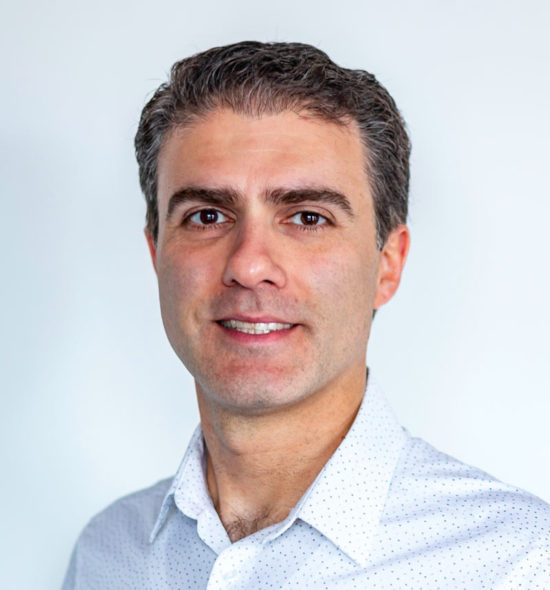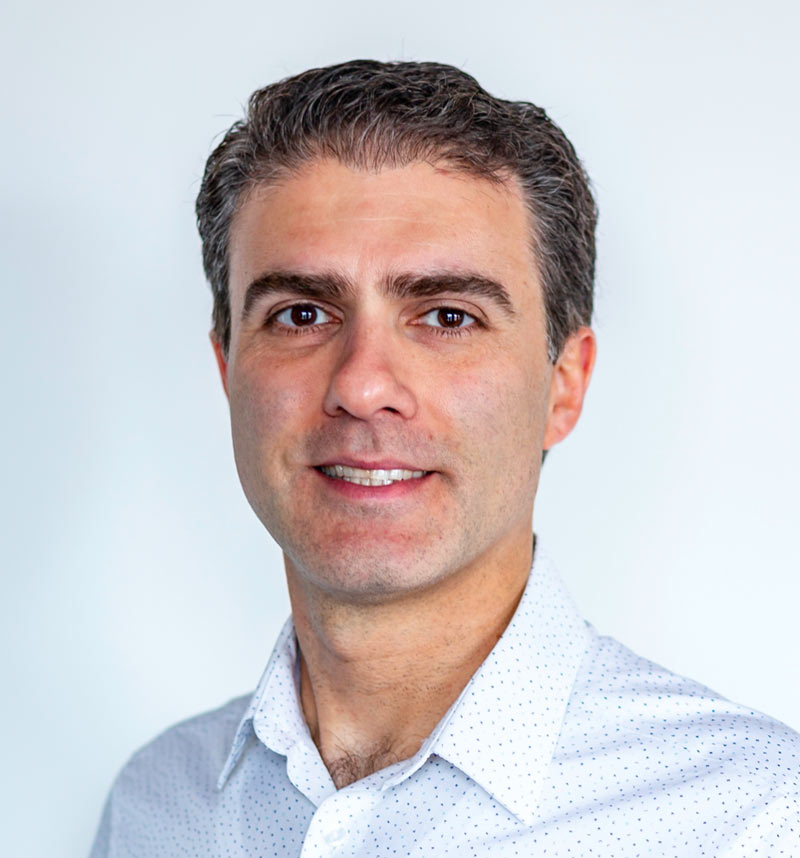 In 2007, wearable sensor technology was just gaining traction. Applications (known as apps) largely focused on fitness and wellness, measuring things like numbers of steps and hours of sleep. However, Ashkan Vaziri, Ph.D., and a few friends had an idea for a different approach: They believed that wearable sensors with medical applications could help older adults remain independent as they age.
In 2007, wearable sensor technology was just gaining traction. Applications (known as apps) largely focused on fitness and wellness, measuring things like numbers of steps and hours of sleep. However, Ashkan Vaziri, Ph.D., and a few friends had an idea for a different approach: They believed that wearable sensors with medical applications could help older adults remain independent as they age.
“The need was very clear,” said Vaziri, “because society is aging, and a lot of people are living longer.” The friends, then all scientists at Harvard University, started a company called BioSensics to execute their vision for technology to help older adults maintain their independence.
More than a decade later, the company’s success — spurred by National Institute on Aging (NIA) and National Institutes of Health Small Business Innovation Research (SBIR) and Small Business Technology Transfer (STTR) funding — has led electronics retailer Best Buy to acquire a portion of BioSensics’ assets. But BioSensics isn’t about to slow down now.
From Idea to Reality
Back in 2007, one of the new company’s first projects was the development of a sensor to detect falls. Every year, more than one in four older adults has a fall, but estimates indicate that less than half tell their doctor. In addition, each year, 3 million older adults are treated in emergency rooms for fall injuries. These injuries can result in disability and reduced quality of life.
Someone who has fallen once is at higher risk of falling again. Fear of falling can lead older adults to be less physically and socially active.
A wearable device that can detect falls could help older adults get help faster and more reliably. If the device could gather data on how people move, Vaziri’s team thought, it might also be able to help predict who is at risk of falling. But there were obstacles to overcome, including minimizing false alarms and undetected falls, which had been pitfalls for other medical alert devices.
BioDigit Home, developed by BioSensics, collects data from wearable sensors, mobile applications, and other digital technologies at a patient’s home — all in one place.

Ashkan Vaziri, Ph.D., chief executive officer of BioSensics.
Armed with pilot data to demonstrate the idea’s feasibility, BioSensics applied for and received Phase I small business funding from NIA to develop the algorithms and technology. Later, a Phase II award — and a collaboration with Baylor College of Medicine, the University of Arizona, and Partners Healthcare — enabled the company to test its sensor in real-world settings.
“From that project, we developed one of the world’s largest databases gathered from older adults in their home environments,” said Vaziri, who is now BioSensics’ chief executive officer. The company used the data to improve its solutions and algorithms to detect as many falls as possible while avoiding false alarms.
With subsequent Phase IIB awards in collaboration with Baylor College of Medicine, BioSensics added capabilities and features aimed at improving usability — and commercial potential. BioSensics also conducted additional clinical studies to further validate its algorithms.
NIA’s support boosted the company’s credibility. “NIA funding shows that the scientific rationale behind your technology and efforts has been validated,” Vaziri said. “It was definitely helpful in our conversations with our partners, and it played acritical role in our commercialization success.”
A Focus on Commercialization
Commercialization was a goal for BioSensics’ technology from the beginning. Figuring out how it could get into the market — for example, through engaging licensing partners or by selling directly to consumers — helped the company make concrete, detailed plans and timelines, Vaziri said.
The company also kept users in mind when designing and refining the technology. For example, the wearable sensor monitors activity, not just events like falls, making the technology more engaging for users. The sensor was also designed to have a long battery life, making it more user-friendly and improving user experience and adoption. These additional consumer-oriented features helped set it apart from other products on the market.
BioSensics successfully secured multiple licensing partnerships that helped deploy its technology to thousands of users. In 2018, Best Buy acquired one of those licensing partners, GreatCall, Inc., and in August 2019, Best Buy acquired BioSensics’ predictive health care technology business.
“That’s a great success story for our team,” Vaziri said. “This acquisition can significantly increase the impact of the technologies that we developed.”
Keys to Small Business Funding Success
In addition to funding from NIA, BioSensics has obtained support for various projects from multiple NIH Institutes. Vaziri credits the company’s success in part to careful preparation before applying for grants. He suggests that applicants make sure that their idea and their application align with the current focus of the Institute they are targeting, review any special funding announcements released by the NIH Institutes and Centers, and reach out to program officers to discuss their proposal before applying.
Having the right team is also critical. Applicants should try to collaborate with leading institutions in their subject area, Vaziri said. And when the preparation is done? “Put a solid application together and submit it —and be a bit patient.”
Taking on New Challenges

BioDigit Home, developed by BioSensics, collects data from wearable sensors, mobile applications, and other digital technologies at a patient’s home — all in one place.
The fall detection technology was one of BioSensics’ first ideas. But the company hasn’t limited its focus to falls. With early-stage investment from NIA and other NIH Institutes, BioSensics has been able to pursue innovative ideas in a variety of areas. NIA has supported the company’s development of a wearable technology for measuring frailty in older adults, a game-based exercise program that chronic kidney disease patients can use while receiving hemodialysis, and a method to assess the risk of bone fracture.
With BioSensics’ most recent NIA SBIR award, the company is creating a platform to help caregivers and medical professionals better manage care for older adults. The team is also working on sensors to continuously monitor cognitive function, technology that could help detect dementia and neurodegenerative diseases. One goal is to identify disease onset or changes in disease state early on, when interventions could be most effective.
Although the technologies are still early in research and development, Vaziri said commercialization remains a key goal. “We want to have the technology available to the market by the end of the small business award.”
That way, the company’s new ideas can start making an impact in people’s lives. “As scientists and entrepreneurs, that’s one of the things you like to see — how many people have benefited from what you’ve created,” Vaziri said. With NIA’s SBIR and STTR funding to help BioSensics lay the groundwork for success, the company is striving to make that goal a reality.
Could SBIR or STTR funding help you translate your idea into impact? Learn more about bringing innovations to market with support from NIA’s small business programs (https://www.nia.nih.gov/research/osbr).









